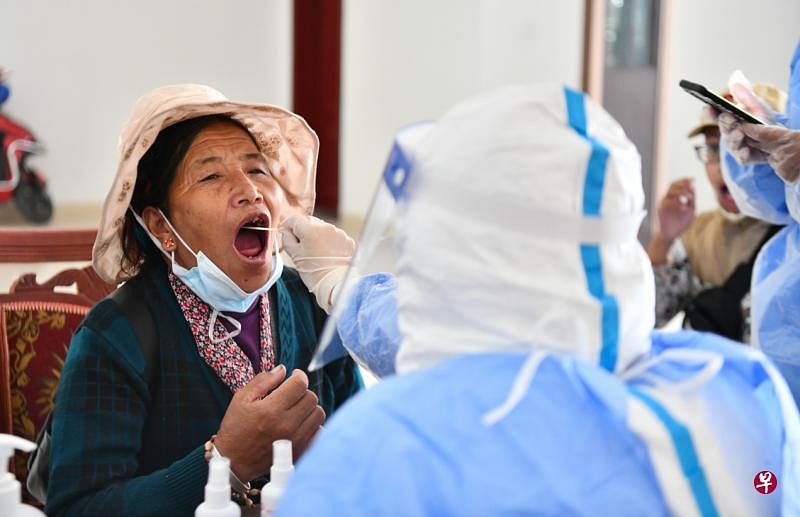
(Beijing Comprehensive News) China's crown disease epidemic has heated again. 1993 local infected people were added on Wednesday. The three -thirds of the infected persons came from Hainan Province for three months.Following Sanya in Hainan, the key urban areas of Urumqi in Xinjiang, the Ali region in Tibet, and Yiwu, Zhejiang have also implemented large -scale control measures in the past two days.
According to data from the National Health and Health Commission of China, there are 614 local confirmed cases in China on Wednesday (August 10), and 1,379 newly added infected infections are added.
Hainan, where the most serious epidemic in this round, adds 559 local confirmed cases and 805 people with no symptoms on Wednesday.Most of the newly -infected people are in Sanya, a tourist city, with a total of 1,254 people. This is also the first time in China for the first time in China to have a single -day new infection.
The Hainan Provincial Party Committee of the Communist Party of China has set a goal earlier to achieve a clear society before Friday, but the number of infected persons has risen rapidly, making it difficult to achieve this goal.
Sanya has implemented temporary static management from August 6th. Except for basic social operation services, epidemic prevention and control, and emergency special circumstances, the city's scope restricts personnel flow.Because in the peak tourist season of Sanya in August, tens of thousands of tourists stayed in the local area due to flight cancellation and epidemic prevention and control.
According to the official report by Hainan Province, the epidemic was triggered by Omikon's mutant plant BA.5.1.3, which was the first report in China, with hidden and contagiousness.
Xinjiang and Tibet, the other two hot tourism targets, have also faced the impact of the epidemic.Xinjiang and Tibet added 380 and 68 crown diseases on Wednesday.
A number of key cities in Urumqi, Xinjiang will implement a five -day static management from Wednesday; the Ali area of Tibet will implement three days of static management from Thursday, advocating that people and tourists are not necessary to flow.Tibet is a positive infection since the 7th of this month, and the record of the 920 days of 920 days has been broken.The mid- to high risk zone in Lhasa, the capital of Tibet, and the city of Shigatse, have previously implemented static management.
Nine provinces have exceeded hundreds of local cases since August
In addition, Zhejiang Yiwu has also implemented three days of static management in the city since Thursday, strictly controlling the flow of personnel, and tentatively determined the operation of all public places. Schools and off -campus training institutions have also suspended offline teaching.
Since August, a total of nine provinces in China have reported more than 100 local infections.The Chinese economy was dragged seriously this year. In the first half of the year, Shanghai and Beijing had fallen into a city or a half -seal city due to the epidemic.The epidemic emitted by this round of this round has led to the "stopping" of tourism purposes such as Hainan, Xinjiang, Tibet, etc., and it is expected that it will once again impact the tourism industry that has just begun to recover.
The official media Economic Daily published a comment on Wednesday that under the control measures in some areas, the normal life of some people is inevitably affected. Long -term resistance to some grass -roots personnel is physically and mentally exhausted, which may cause paralysis thoughts and wars.




